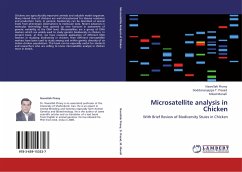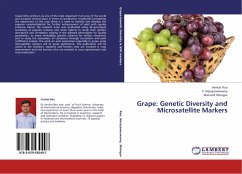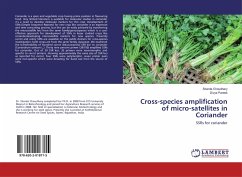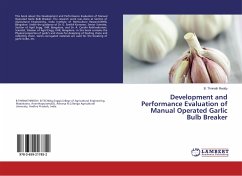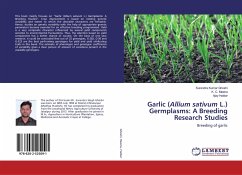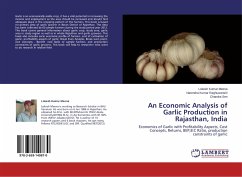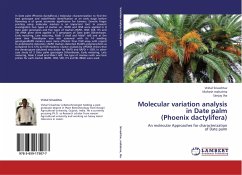
Microsatellite analysis and marker development in garlic
Distribution in EST sequence, genetic diversity analysis, and marker transferability across Alliaceae
Versandkostenfrei!
Versandfertig in 6-10 Tagen
27,99 €
inkl. MwSt.

PAYBACK Punkte
14 °P sammeln!
Allium vegetables, such as garlic and onion, have understudied genomes and limited molecular resources, hindering advances in genetic research and breeding of these species. In this study, we characterized and compared the simple sequence repeats (SSR) landscape in the transcriptomes of garlic and related Allium (A. cepa, A. fistulosum, and A. tuberosum) and non-Allium monocot species. In addition, 110 SSR markers were developed from garlic ESTs, and they were characterized-along with 112 previously developed SSRs-at various levels, including transferability across Alliaceae species, and their...
Allium vegetables, such as garlic and onion, have understudied genomes and limited molecular resources, hindering advances in genetic research and breeding of these species. In this study, we characterized and compared the simple sequence repeats (SSR) landscape in the transcriptomes of garlic and related Allium (A. cepa, A. fistulosum, and A. tuberosum) and non-Allium monocot species. In addition, 110 SSR markers were developed from garlic ESTs, and they were characterized-along with 112 previously developed SSRs-at various levels, including transferability across Alliaceae species, and their usefulness for genetic diversity analysis. Among the Allium species analyzed, garlic ESTs had the highest overall SSR density, the lowest frequency of trinucleotides, and the highest of di- and tetranucleotides. When compared to more distantly related monocots, outside the Asparagales order, it was evident that ESTs of Allium species shared major commonalities with regards to SSR density, frequency distribution, sequence motifs, and GC content.



